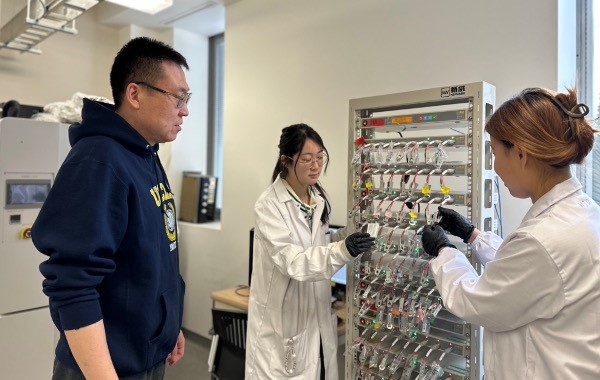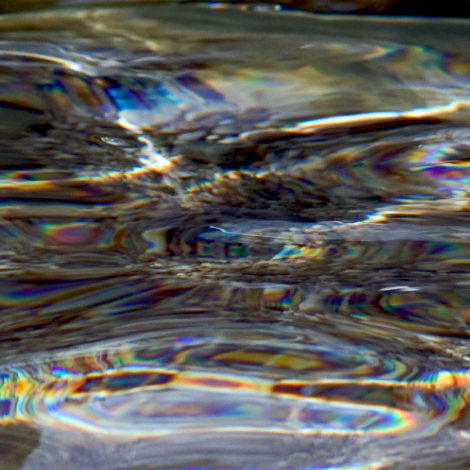
[Left to right] Dr. Xiaolei Wang with PhD student Ms Zhao Yu and postdoctoral fellow researcher Dr. Wenjing Deng show two types of battery cells they fabricated using the new anode material: a coin cell and a pouch cell. Photo courtesy of Dr. Xiaolei Wang via the Canadian Light Source
“If we can utilize this type of battery technology in storing our energies, then we can have reliable, we can have safer, we can have affordable battery technologies or energy storage technologies for everyone,” Dr. Wang said in a statement to the Canadian Light Source at the University of Saskatchewan, which supported the research.
Aqueous batteries are promised to be safer, cheaper, and easier to recycle than lithium-ion, but their development was held back by the lack of a viable anode. The anode Dr. Wang and team have made, when paired with a metal-free cathode, makes for seawater batteries with a lifespan of thousands of charge-discharge cycles.
To build the anode, the researchers developed a new material from polymer nanosheets and carbon nanotubes capable of storing ions found in seawater. The thicker anode design holds more energy, lasts through extreme conditions, and endures up to 380,000 charge cycles. The result could push seawater batteries out of the laboratory and into real-world energy storage.
The anode addresses challenges in energy storage by lowering the costs of materials while increasing performance compared to other battery chemistries. Seawater batteries could put grid-level battery storage in reach.
“Current lithium batteries have reached their limitations in terms of energy storage capability, life cycle, and safety,” Dr Wang says. “They’re good for applications like electric vehicles and portable electronics, but they’re not suitable for large-scale grid-level energy storage.”
Dr. Wang discusses the advancement and the implications of accessible, affordable energy storage in this video.

